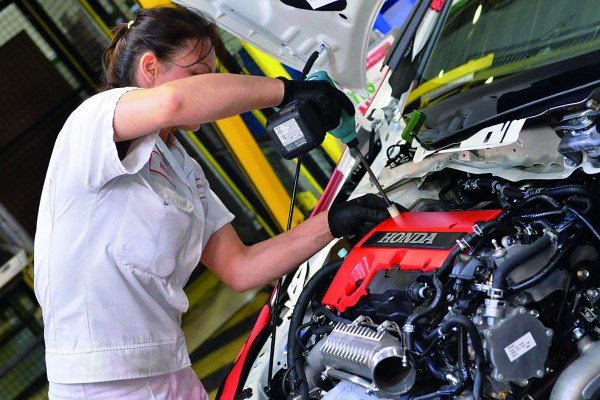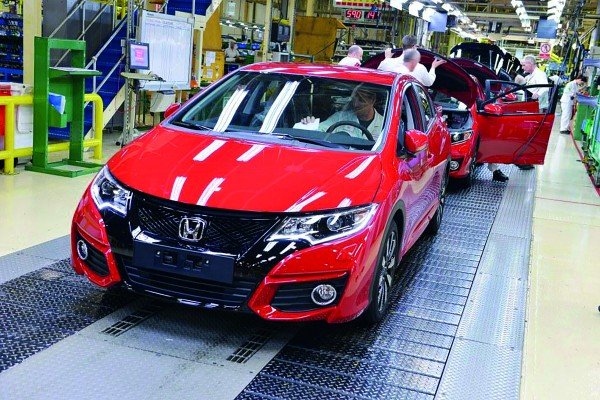
Musculoskeletal disorders are increasing as a work-related injury. Matthew Birtles (HSL) and Faraz Shoghi (Honda UK) explain how ‘doing the right thing’ to minimise musculoskeletal disorders significantly benefits businesses and their employees.
While cases of musculoskeletal disorders (MSDs) had gradually declined for around ten years, recent figures show that they are once more becoming prevalent. As incidences of work-related MSDs exceed half a million – a level last seen in 2010 – the costs of MSDs to business are likely to rise accordingly.
As HSE’s 2013/14 statistics reveal, new cases of workplace illness cost the economy around £8.6bn, with workplace injury costing a further £5.6bn. [1]
Proactive management of MSDs is all about doing the right thing for the right reasons. Protecting employee health and wellbeing in turn brings financial benefits and the assurance that you are complying with relevant legislation. [2]
The costs of risk management based on assessment, improvements in workplace ergonomics, workforce engagement, case management and rehabilitation are typically regarded as business overheads. Arguably, they should be viewed as investments.
Good health means good business
Besides providing the headline benefits of reduced sickness absence (MSDs accounted for 8.3 million days sickness absence in 2013/14) and compensation claims [3], investing in workforce health and safety has been shown to improve morale, reduce staff turnover, increase productivity and lower stress. For these reasons, proactive MSD management should be embraced and organisations urged to calculate their own cost/benefits to verify that good health means good business.
In 2006, HSE published a report prepared by Hu-Tech Ergonomics (HSE Research Report 491) comprising 29 individual case studies which demonstrate the benefits, across many industries, of tackling musculoskeletal disorders. In cost-conscious times, this report is more relevant than ever, helping us to find the financial justification for doing the right thing.
HSL’s ergonomists provide businesses with the understanding and strategies needed to effectively and proactively manage MSDs and to obtain the consequent benefits. The vehicle manufacturing sector is one example of where this has been done with great effect.
Effective management of MSDs
At Honda’s UK production facility, a dedicated 3,000-strong workforce creates and assembles almost every component of the cars that drive off the production line every 90 seconds, ready for world-wide export.
Such a complex operation relies upon detailed planning, wholesale coordination and a level of efficiency made possible only by the continuous drive to improve. At Honda, every decision is evidence based and the status quo is continuously challenged.
Similarly, the approach to health strives to develop and sustain a productive, flexible workforce. This is why – despite the majority of production work involving moderate to heavy manual handling, challenging postures and repetitive tasks – the company still achieves industry leading performance indicators.
Although half the cases are musculoskeletal in origin, the overall sickness absence rate rarely exceeds two per cent, and over 90 per cent of production based employees carry no musculoskeletal restrictions.
Honda’s approach
Honda’s procurement of a progressive physiotherapy service represents one of the calculated investments made to improve the way musculoskeletal disorders are treated and prevented. Although fully integrated into the organisational culture, the service remains independent, and is universally acknowledged by employees as a perk.
 This specialist resource allows for much earlier intervention than reliance upon external healthcare providers. Importantly, recommended advice or treatment is based on a solid understanding of the work environment and focuses upon a return to full work function. It also offers a means to mediate, or challenge, outside influences such as GP fit notes requesting ‘light duties’ or other potential obstacles to a return to work.
This specialist resource allows for much earlier intervention than reliance upon external healthcare providers. Importantly, recommended advice or treatment is based on a solid understanding of the work environment and focuses upon a return to full work function. It also offers a means to mediate, or challenge, outside influences such as GP fit notes requesting ‘light duties’ or other potential obstacles to a return to work.
In Honda’s experience, such early intervention mirrors prior evidence and leads to better outcomes in the extent and speed of recovery. Considerable returns on investment have been realised through the reduction of costs incurred by long-term absence and as a result of the increased flexibility in the production areas from non-restricted employees.
Gordon Waddell and Kim Burton’s ground-breaking review in 2006 [4] clearly outlined the scientific evidence which supports the idea that good work (where the person-job fit is optimal) positively influences health and wellbeing. This further reflects Honda’s experience that facilitating a quick and safe return to work often leads to a more successful outcome for musculoskeletal cases of all complexities.
Various strategies are applied to achieve this, of which the most effective for more complex cases is a phased return-to-work plan agreed by all stakeholders, which may include a period of reduced hours and/or duties. Buy-in from the treating medical practitioner is very important, but invariably obtained when they know that an employer utilises occupational health specialists.
The strategies discussed so far can be considered as ‘reactive’, as they apply to musculoskeletal disorders that have already occurred. As employees will inevitably incur MSDs at times, robust reactive mechanisms to address them remain important in order to prevent unnecessary sickness absence and associated costs. Building on this foundation is a collection of ‘pro-active’ strategies aimed at preventing MSDs, both work and non-work related, as either can adversely impact work.
The benefit of utilising support mechanisms that are closely linked with the organisation is that they can fuel continuous improvement. For instance, rehabilitation activity is regularly shared with the business via health and safety committees, senior management reviews, and absence clinics. These can identify trends or ‘hot spots’, enabling collaboration between business areas to agree upon solutions. Such solutions may apply to primary prevention, as well as retention and return to work.
Physiotherapy assessments that are grounded in evidence and best practice encourage the root causes of musculoskeletal disorders to be identified and addressed. Information gathered from work-related cases and fed back to the business can, where feasible, prompt improvements such as redesigned tasks or products, reducing the likelihood of similar injuries. This on-going loop-back from Honda’s physiotherapists and other health and safety experts consistently leads to operational improvements.
Ageing workforce
An ageing workforce, among all industries, means that proactive effort to safeguard employee health and wellbeing is increasingly business critical. With advancing age, individual fitness and health become more central to reducing the risk of musculoskeletal disorders. This is compounded by age-related risks of other debilitating conditions such as diabetes and cardiovascular disease. Strategies to mitigate these vulnerabilities must aim to raise the health profile of the employee demographic and explore methods of reducing the physical demands of work. Both require investment but the former also requires a significant change in corporate culture and individual attitudes toward personal health and wellbeing. These can only be achieved through genuine engagement with the workforce to secure buy-in.
 Dame Carol Black’s 2008 report Working for a healthier tomorrow [5] paved the way for national strategies which attempted to safeguard the working population via innovations such as the fit note in 2013 and Fit for Work programme in 2015. Although steps in the right direction, these strategies are no substitute for embedded health and safety experts, whether outsourced or in-house.
Dame Carol Black’s 2008 report Working for a healthier tomorrow [5] paved the way for national strategies which attempted to safeguard the working population via innovations such as the fit note in 2013 and Fit for Work programme in 2015. Although steps in the right direction, these strategies are no substitute for embedded health and safety experts, whether outsourced or in-house.
For British companies which rely on manual labour, continual investment in employee health is necessary to ensure the sustained productivity and agility of their workforce, despite the national shift in the working age and a notable trend in deteriorating levels of public health.
Matthew Birtles is principal ergonomist at the Health and Safety Laboratory and Faraz Shoghi is occupational health manager for Honda of the UK Manufacturing Ltd
References:
- Musculoskeletal Disorders in Great Britain 2014, HSE
- The business benefits of health and safety: a literature review, British Safety Council, 2014
- Evaluation of the Success in Britain of the Directive on Minimum Safety and Health Requirements for Work with DSE (90/270/ EEC) Gervais, R.
- https://www.gov.uk/government/publications/is-work-good-for-your-healthand-well-being
- https://www.gov.uk/government/publications/working-for-a-healthiertomorrow-work-and-health-in-britain
What makes us susceptible to burnout?
In this episode of the Safety & Health Podcast, ‘Burnout, stress and being human’, Heather Beach is joined by Stacy Thomson to discuss burnout, perfectionism and how to deal with burnout as an individual, as management and as an organisation.
We provide an insight on how to tackle burnout and why mental health is such a taboo subject, particularly in the workplace.




